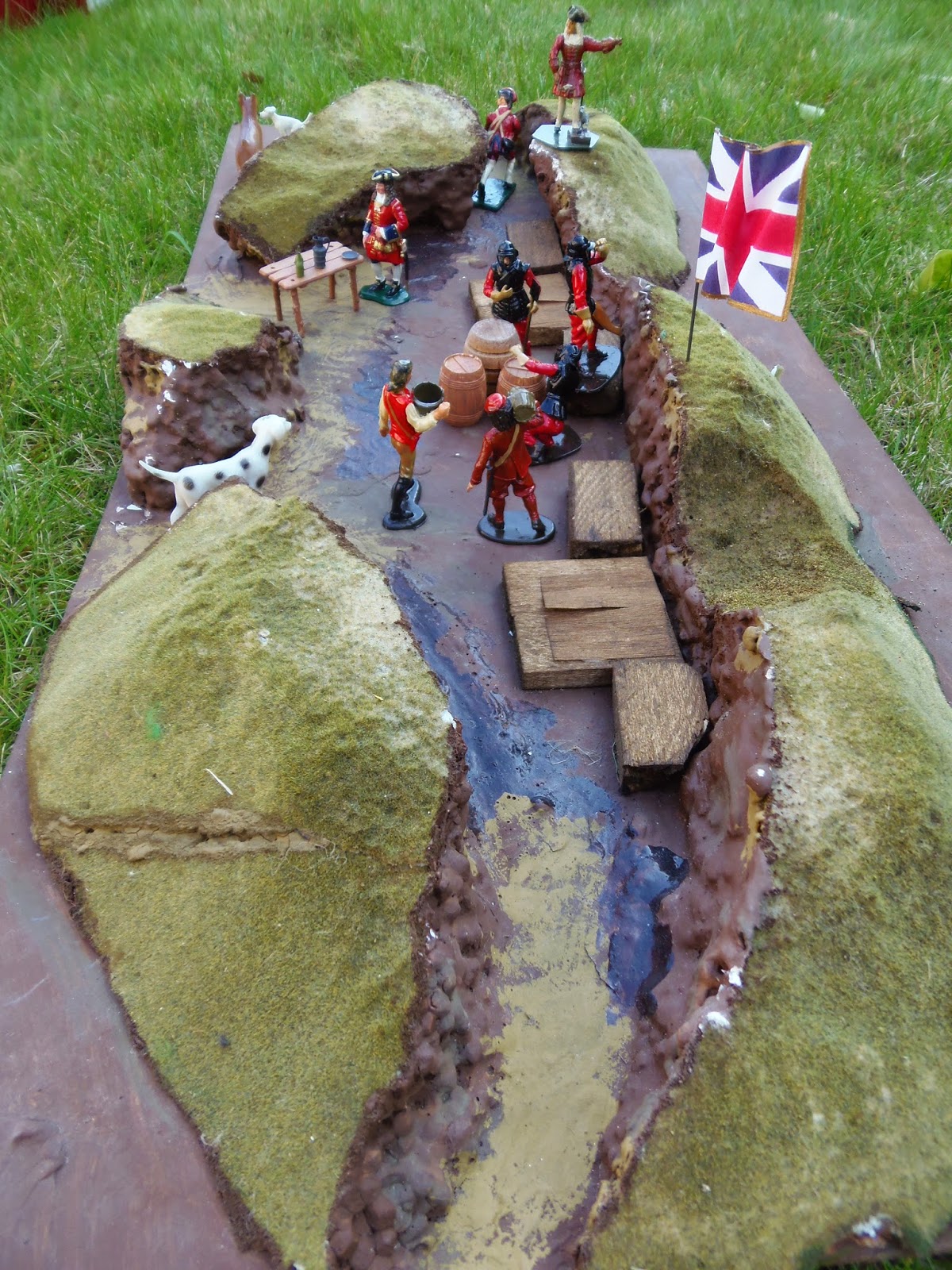This aspect of the siege offers the greatest challenge to the garden wargamer, and therefore it is best that we begin here - because not only is it possible to reproduce, but it also can be a most exciting part of the whole game....
In this rule test, a French Ravelin is to be reduced:
So, to begin, the Chief Engineer of the Army is summoned, and the distant prospect of the town is surveyed. The sappers and miners are then given their objective - and the tunnel begins from the rear trench line.
Suitable toy soldiers are useful, but not essential - and a mining company should include between four - six soldiers with an Officer, Sergeant and Cart.
The tunnelling can now begin...and in our most recent siege at Westmalle-Trappist the attackers built two tunnels!




Looking good. I imagine a system of blind pre plotted movement for tunnels?
ReplyDeleteGreat photos. I like the officer heading toward the bottle of sack on the table. Does the dalmatian have a name? Also could you let me know who the engineers in siege armour are by ?
ReplyDeleteGreat looking set up. I look forward to seeing what happens next...
ReplyDeleteShould an 18th century cleric not be added to give support and encouragement and perhaps to share the bottle of sack with the officer?
Alan
A dastardly enterprise not fitting for Gentlemen!
ReplyDeleteDearly Beloved, warmest thanks and compliments: and in answer to your most kind comments:
ReplyDeleteTunnels will indeed be plotted - but with Baroque variations
The Dalmatian is called 'Sir' due to his alarming size - and the figures are Airfix converts (from the ECW kits)
The Chaplain was alas engaged with Evensong, it being the Sabbath - his rather slack deputy was drinking tea on the lane and playing with toy soldiers....
The 'quality' if the players of Vauban and Shandy has never been in any doubt!
An now we sing the Hymn,
'A safe stronghold,
our Elastolin Castle still,
but a little less safe,
due to that mine tunnel'
'With walls of plastic &c &c'
Music - any suitable Bach Chorale
So we can blame the Reformation on Elastolin then? We will have to rewrite the ecclesiastical history texts and perhaps have a go at proposing a Phd based upon the role of composition figures in the thought and gaming of Martin Luther...
ReplyDeleteMuch as the V&S blog celebrates Martin Luther, we would ask him not to nail any Theses (however edifying) onto the walls of our Elastolin Castles...and how strange, but this very morning a splendid little volume on the life of Martin Luther as told in Zinnfiguren dropped through the letterbox.
ReplyDeleteI think we can safely assume that Luther would have chosen the rigours of the divinely (HG Wells) appointed 'early' 54mm scale toy soldier as opposed to the shallow, corruptible and false doctrines of 6mm/15mm/20mm/28mm types. Excepting of course 42mm semi-flats, which are close enough to be theologically sound and acceptable.
The next Chorale in our series:
'Now thank we all our God,
with tin and lead and enamels,
and in their proper scale,
of one to thirty second
Who keeps us in the true faith,
and frees us from false scales,
&c &c &c
I think most hobbyists would say that 54mm and semi-flat homecasts were the two lungs of the hobby.
ReplyDeleteI do hope the word "enamels" has not been replaced with "acrylics" to make it more relevant/accessible to the modern man in recent renderings of the Chorale.
I did read somewhere that Master Luther spent ages devising a set of rules whilst sitting in a small tower room in some German castle.Can the author of Vauban and Shandy confirm this for us? Perhaps it is only a foul rumour put about by Swabians like my forebearers.